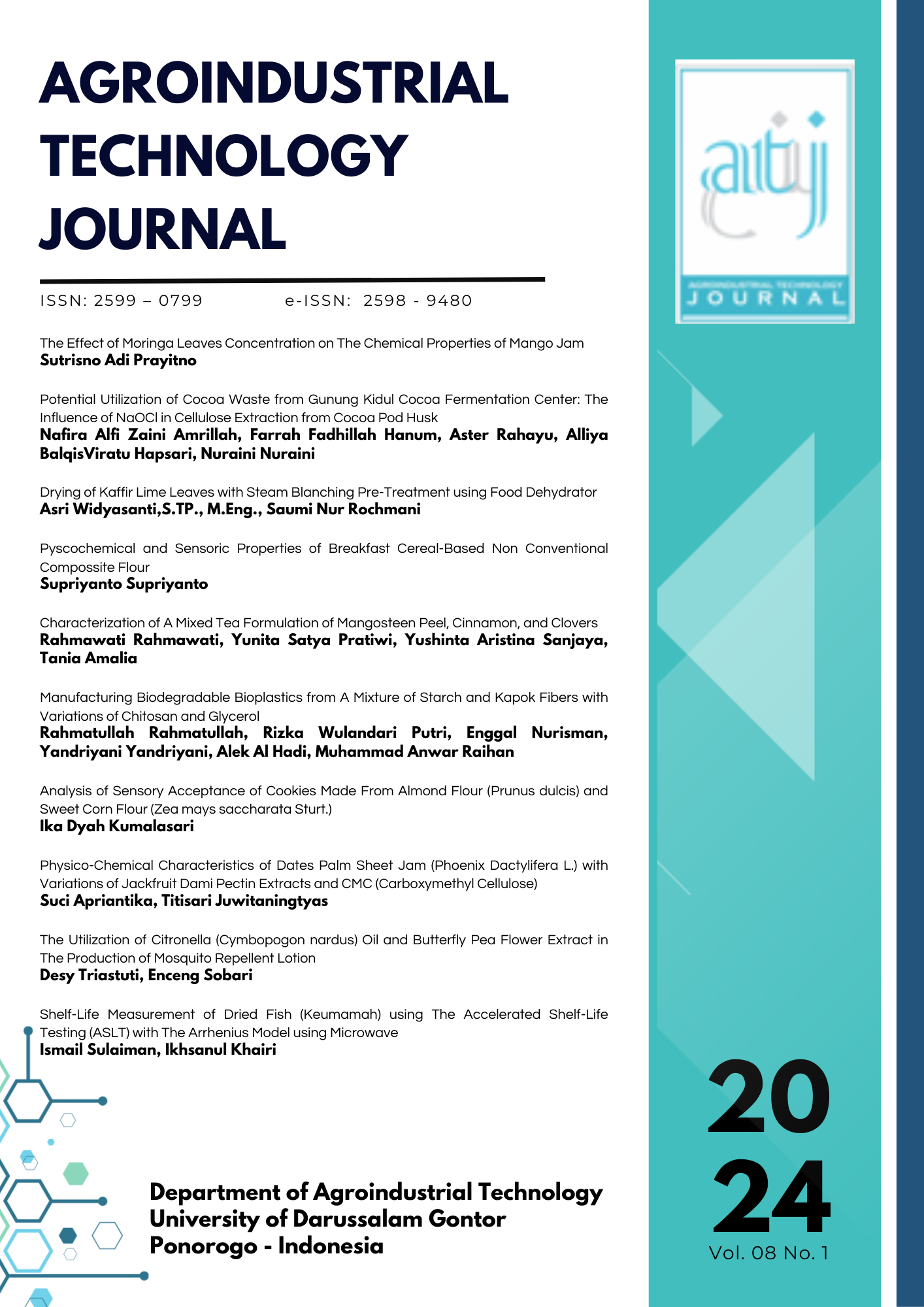Manufacturing Biodegradable Bioplastics from A Mixture of Starch and Kapok Fibers with Variations of Chitosan and Glycerol
DOI:
https://doi.org/10.21111/atj.v8i1.11086Abstract
Biodegradable bioplastics are the latest solution to the problem of conventional plastics which hurt the environment. Types of biodegradable bioplastics, namely starch-based plastics and cellulose-based plastics, have been developed in many studies. Cellulose can be made into biodegradable bioplastics by adding starch, plasticizers, and strengthening materials with certain variations. This research aims to determine the effect of mixing glycerol plasticizer and the concentration of chitosan on the biodegradable bioplastics produced. The variables observed started from elongation, Young's modulus, density, tensile strength, biodegradability, and water resistance. The best biodegradable bioplastics results for density, tensile strength, and percent elongation values were obtained with variations of 60% glycerol and 3 gram chitosan of 5.62 g / mL, 163.5 KPa and 4.26 KPa; Young's modulus for variations of 20% glycerol and 3-gram chitosan is 45.17 KPa; the water absorption capacity of variations of 20% glycerol and 0.5-gram chitosan is 81.5%; and the bioplastic mass degraded at a variation of 40% glycerol and 3-gram chitosan at 49.21%.Downloads
Submitted
Accepted
Published
How to Cite
Issue
Section
License

This work is licensed under a Creative Commons Attribution-NonCommercial-ShareAlike 4.0 International License.
The author whose published manuscript approved the following provisions:
1. The right of publication of all material published in the journal / published in the Agroindustrial Technology Journal is held by the editorial board with the knowledge of the author (moral rights remain the author of the script).
2. The formal legal provisions for access to digital articles of this electronic journal are subject to the terms of the Creative Commons Attribution-NonCommercial-ShareAlike 4.0 International License (CC BY-NC-SA 4.0), which means that Agroindustrial Technology Journal reserves the right to save, transmit media or format, Database), maintain, and publish articles without requesting permission from the Author as long as it keeps the Author's name as the owner of Copyright.
3. Printed and electronically published manuscripts are open access for educational, research and library purposes. In addition to these objectives, the editorial board shall not be liable for violations of copyright law.



